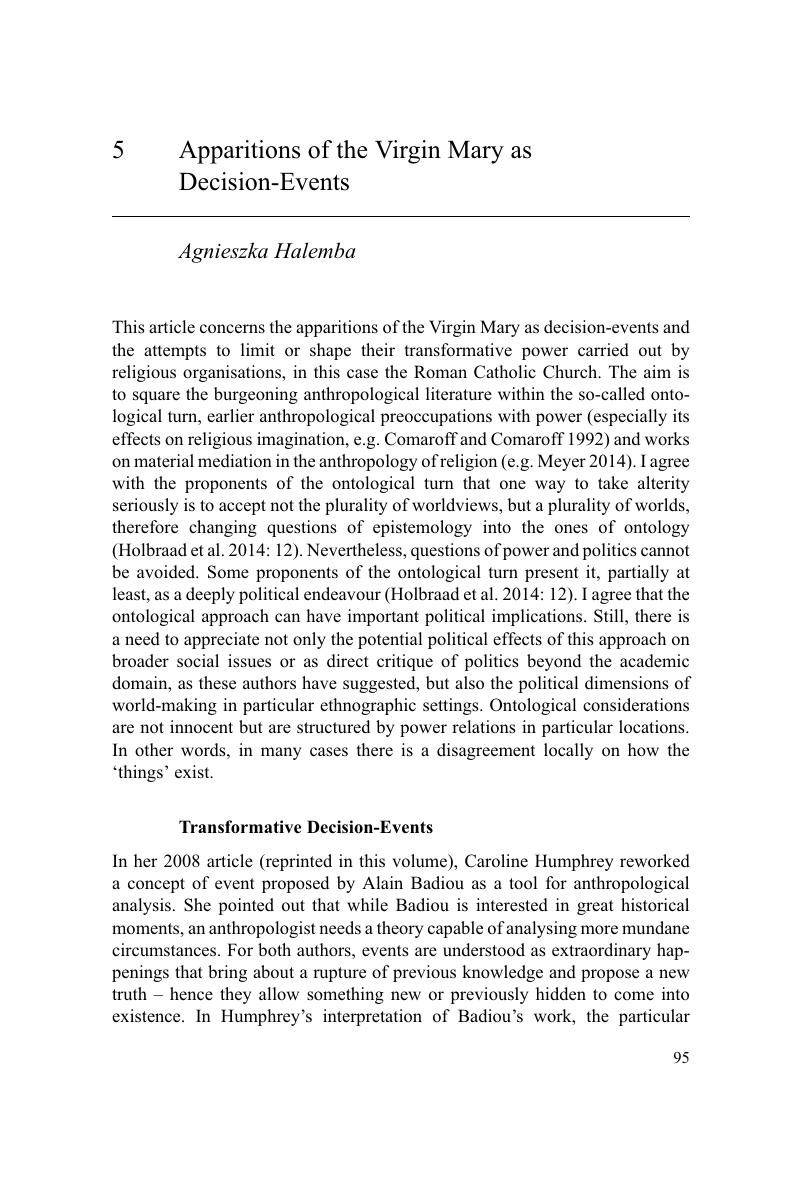Book contents
- Recovering the Human Subject
- Frontispiece
- Recovering the Human Subject
- Copyright page
- Contents
- Contributors
- Acknowledgements
- 1 Introduction
- 2 Reassembling Individual Subjects
- Part I Decision
- 3 On Singularity and the Event
- 4 Apathy and Revolution
- 5 Apparitions of the Virgin Mary as Decision-Events
- Part II Freedom
- Part III Creativity
- Index
- References
5 - Apparitions of the Virgin Mary as Decision-Events
from Part I - Decision
Published online by Cambridge University Press: 01 February 2018
- Recovering the Human Subject
- Frontispiece
- Recovering the Human Subject
- Copyright page
- Contents
- Contributors
- Acknowledgements
- 1 Introduction
- 2 Reassembling Individual Subjects
- Part I Decision
- 3 On Singularity and the Event
- 4 Apathy and Revolution
- 5 Apparitions of the Virgin Mary as Decision-Events
- Part II Freedom
- Part III Creativity
- Index
- References
Summary

- Type
- Chapter
- Information
- Recovering the Human SubjectFreedom, Creativity and Decision, pp. 95 - 112Publisher: Cambridge University PressPrint publication year: 2018



